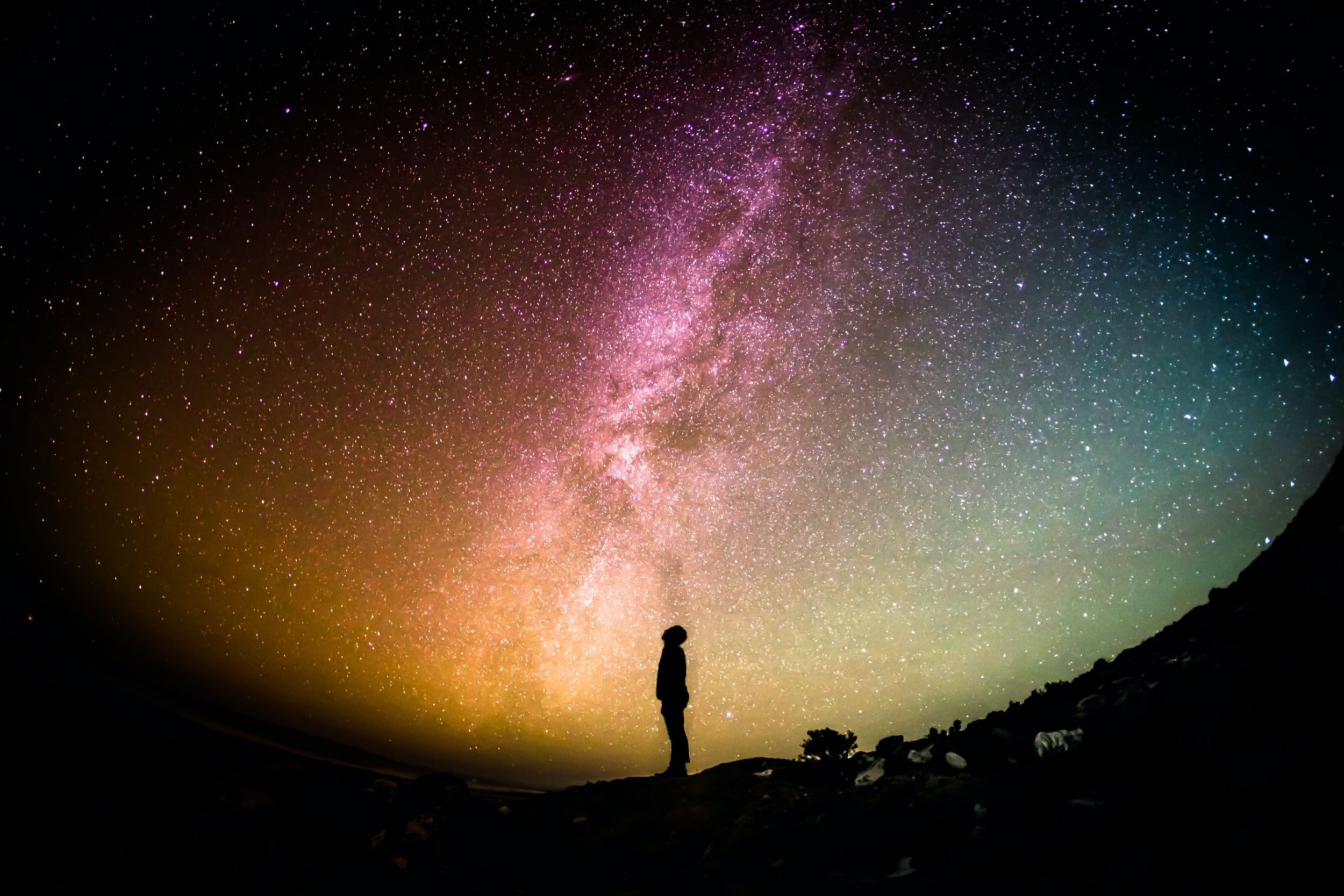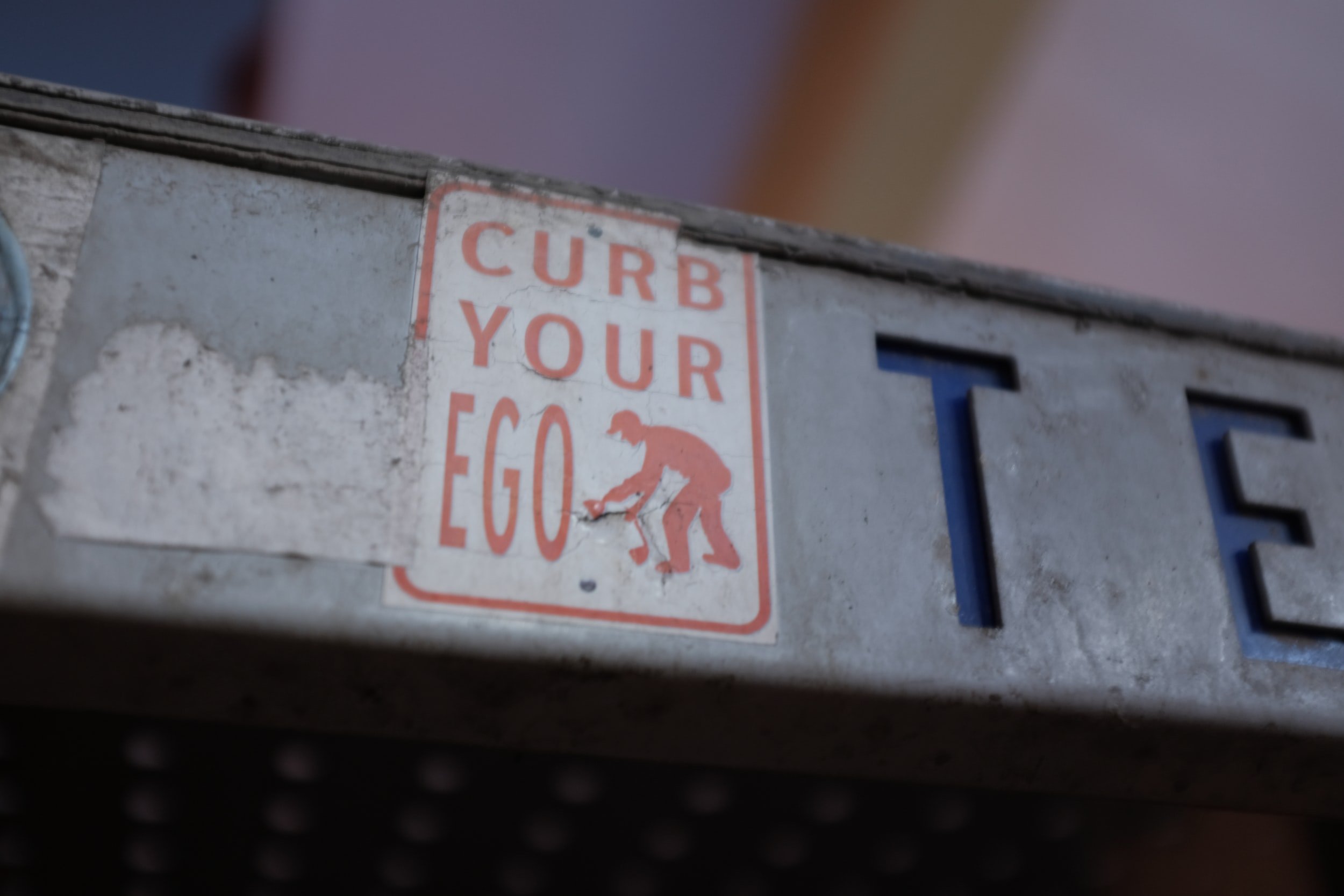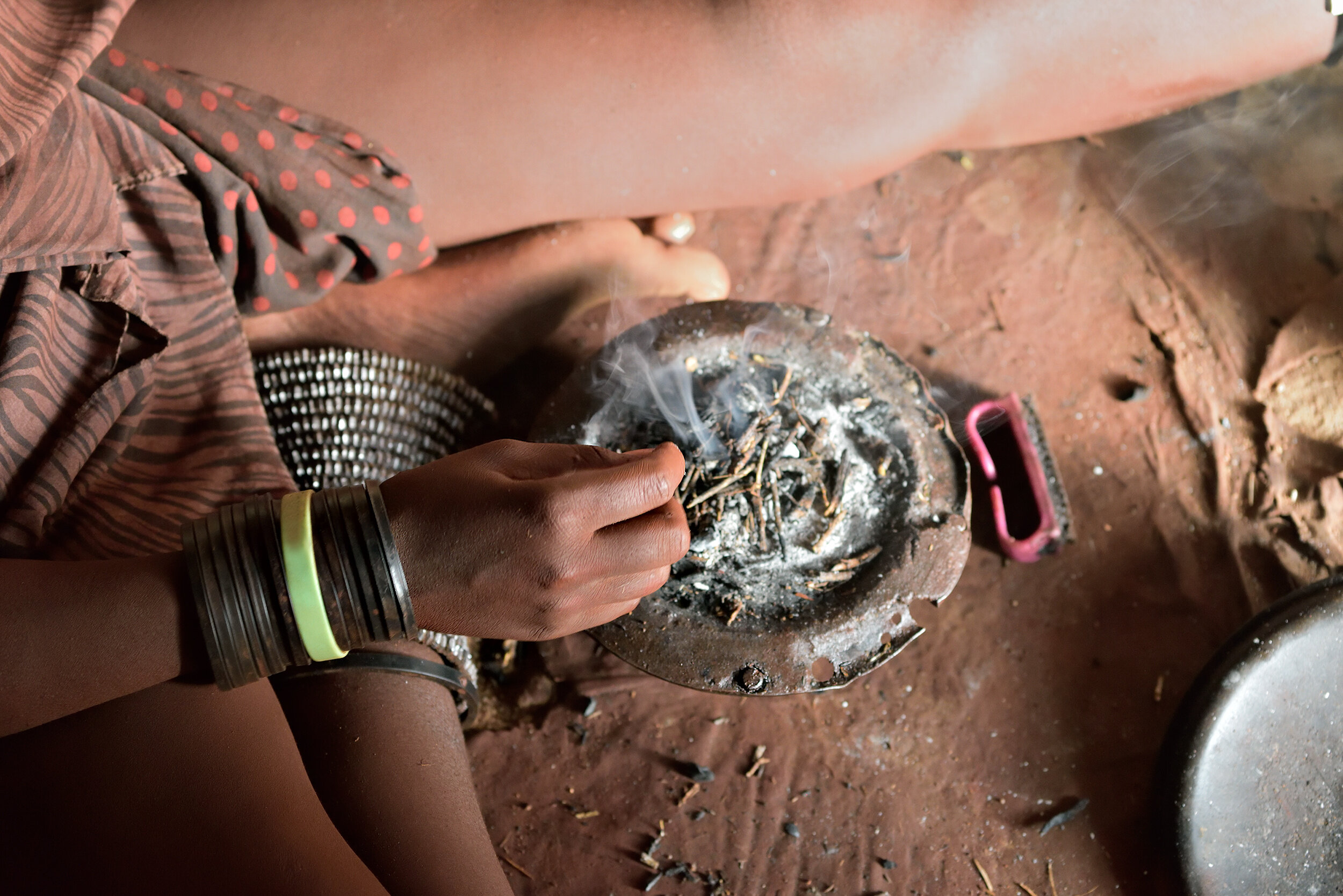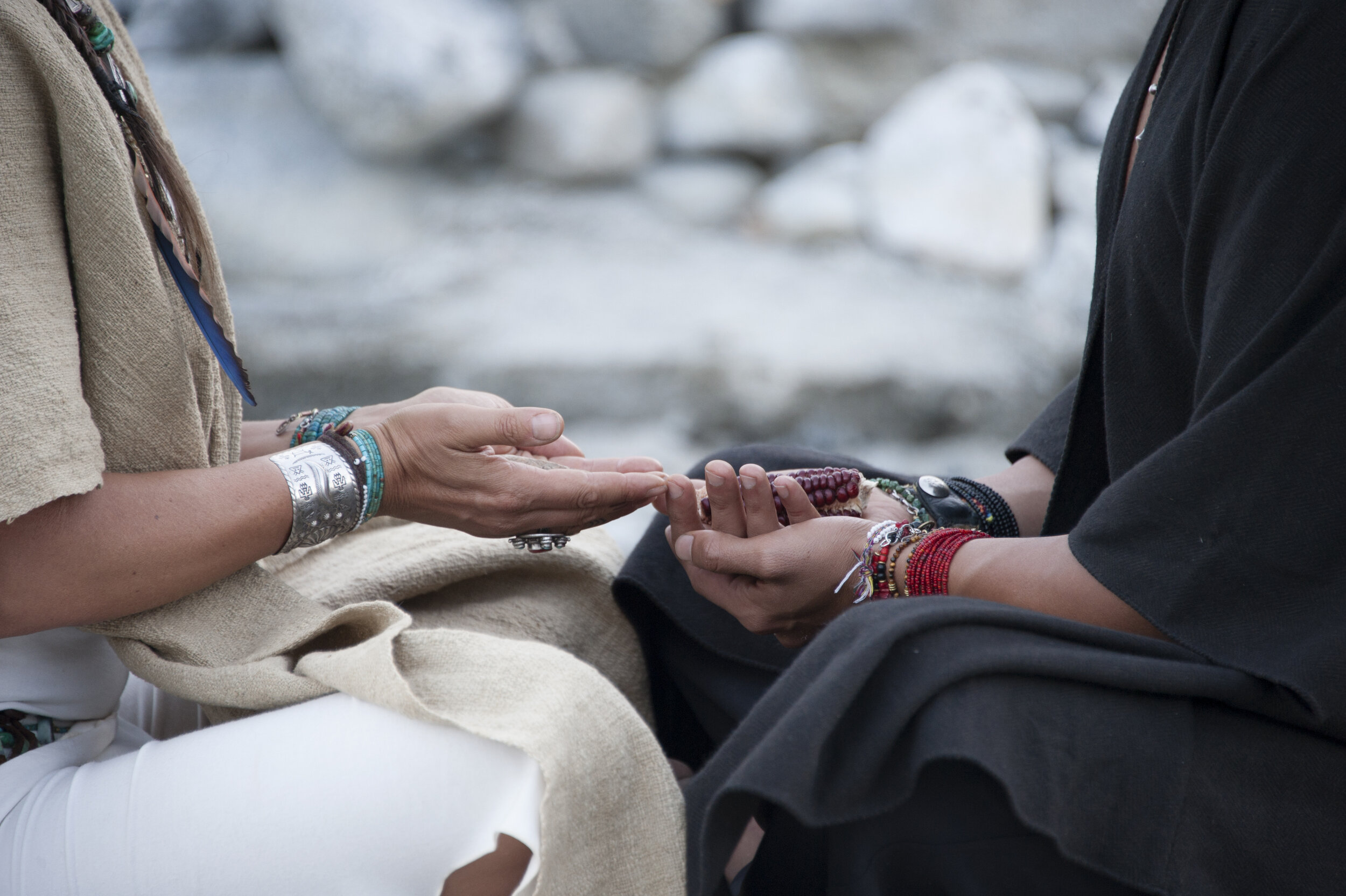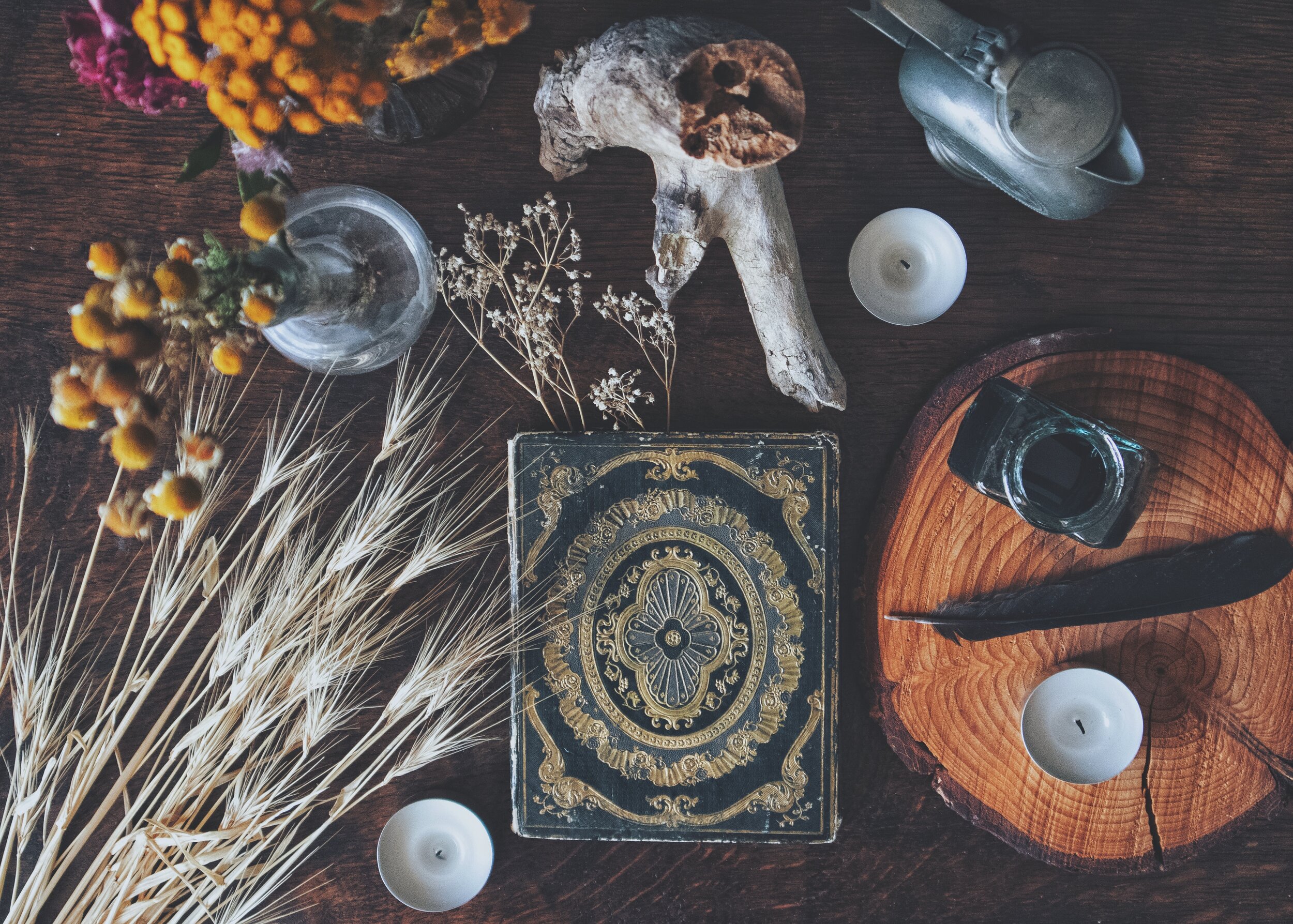When I first started my shamanic practice, the most common reason clients saw me was to work on their trauma. Over the past two years, I have heard this phrase over and over from clients, "I just feel disconnected." I would like this phenomenon here, and perhaps offer some insight if you are feeling this disconnection.
I'll begin by saying I am not a doctor, psychologist, or mental health counselor. Nothing you read here or anywhere else can diagnose or treat any condition you might have. I tell all of my clients that shamanic healing works well in conjunction with modern medicine and psychotherapy.
If you are in distress seek help immediately. You can reach out to a local helpline, contact emergency services or your mental health professional. Please be safe, you are important.
I want to examine the feeling of disconnection so many have today, the source of those feelings, and some things you can do besides psychotherapy and shamanic healing.
The Spiritual Reasons Why You Might Feel Disconnected
In the shamanic viewpoint, every being has a body, a soul body, and a spirit. The spirit is your divine spark and is connected to everything and everyone else. it can never be disconnected, is not born, and never dies. it is your immortal divine spark. the spirit is unaffected by the things that happen during our life.
The soul body, however, is closer to what we think of as the spiritual body. it is close to the physical and can be affected by what happens in our life. It is affected by our thoughts, feelings, physical illnesses, and injuries. Later in this article, I will specifically talk about soul loss, one spiritual source of illness which can affect the body and mind.
The Ego Makes Us Feel Separated
There tends to be a lot of confusion about what the ego is spiritual. The ego is simply our sense of ourselves as separate beings in our day-to-day experiences. A better word for this might be a persona, which is the complex of our individual personality and identity.
When we identify with our ego, our body, or our persona, we naturally feel disconnected from our spirit. We feel like it may be far away from us, though nothing could be more intimate. This is the way the ego creates delusion. This s normally an automatic response and not something we consciously choose.
During meditation, prayer, or the shamanic practice of transfiguration, there can be moments of clear recognition of the divine self. It's not just about stopping negative thoughts, it is a re-identification with the pure true self. When this happens, mental health and physical health improves, as does our sense of connection.
When you feel connected to everything in the Universe, loneliness disappears.
It is a major focus of my practice to help my clients rediscover who they really are as divine spiritual beings.
Dissociation
One comment type of disconnection is dissociation.
Dissociation is when you retreat from your feelings, memories, or sensations. It can be a way to cope with difficult emotions or traumatic experiences. Dissociation might make it harder for you to feel connected to your body, experience emotions, and interact with others.
While dissociating can be an adaptive response to trauma that helps to make you feel safe, it's not always a positive experience.
Dissociation can happen as part of post-traumatic stress disorder (PTSD), anxiety disorders, or depression. If dissociating feels like it's becoming a habitual way of coping, it's a good idea to seek out the help of a licensed therapist.
There are two major forms of dissociation - depersonalization, and derealization.
Depersonalization
This type of dissociation happens when a person feels their thoughts, experiences or emotions and not connected to themselves. Depersonalization usually occurs in response to trauma, such as physical abuse or emotional neglect.
Depersonalization is often caused by an extreme threat situation such as war where you are being attacked on all sides while your life hangs in the balance: "I passed out into another realm."
When one experiences depersonalization they can feel disconnected from their body. Sometimes it's like you are floating outside your body, or you can feel like your thoughts are not your own.
British Journal of Clinical Psychology describes it this way: "Depersonalisation produces feelings of detachment from self, surroundings, and life..."
Derealization
This type of dissociation happens when one feels detached from their environment like you're watching a movie or being in an out-of-body experience. Derealization usually occurs after experiencing extreme traumatic events such as war, sexual and physical abuse.
Derealization can feel like you are in a dream world. Experience of time can feel strange. The world around you doesn't seem real.
Disconnection as a Mental Health Symptom
Again, nothing here should be taken as professional advice, and if you are having mental health issues, problems with substance abuse or feeling overwhelmed - I encourage you to seek out professional mental health support. Shamanic healing can work wonderfully in conjunction with traditional talk therapy and psychiatry.
This feeling of disconnection can come from various places, and I'll outline a few of them here. Understanding the source isn't as important as understanding when one is having a difficult time emotionally, and seeking out help.
I cannot cover every possible mental health diagnosis which may come with a feeling of disconnection, I will focus primarily on trauma here. I am aware that it can be a symptom of other disorders like bipolar disorder or borderline personality disorder. When clients come to me with diagnosed mental health disorders, i always recommend they continue their medical and therapeutic treatments during the shamanic healing process.
Trauma and PTSD
When I first hung out a shingle as a shamanic practitioner, 100% of my clients came to me to deal with problems stemming from, trauma. I have a history of trauma, and there is an effect called "wound resonance" where we tend to seek healers who have had similar experiences.
PTSD or Post Traumatic Stress Disorder is an extremely common form of mental illness often associated with people who have been through a war. Trauma comes in many forms, however, and developmental trauma, which happens during childhood, is far too common.
Complex PTSD or c-ptsd, is not a recognized diagnosis (yet) but shows up when there is a long history of developmental trauma, child abuse, neglect, and the like. I hope that someday the mental health profession will lobby to make c-ptsd or developmental trauma disorder actual diagnoses,
Pandemic Isolation
As I write this at the beginning of 2022, the world has been coping with the COVID 19 pandemic for over two years. The pandemic has brought with it lockdowns, social distancing, quarantines, masks, etc. Schools and workplaces have gone remote at least some of the time. We have been isolated from each other, even family members and close friends.
This isolation, lack of travel, and perhaps working from home can feel like you're on a hamster wheel. I'm reminded of the movie Groundhog Day, where Bill Murray's character lived the same day over and over again. The lack of experiencing different things can create depression, a loss of interest in day-to-day activities, and a sense of disconnection.
In my shamanic healing practice, I saw a dramatic uptick in clients coming to me with mental fatigue from all of this. All of them complain about that feeling of disconnection. For many, it has made mental health issues, like addiction, worse.
One thing the pandemic has done is to highlight the importance of our social support system. As human beings, we are hard-wired for social contact. Different people have different needs for socialization, but almost nobody thrives without interacting with other people.
Social Media
In the modern world, where we are connected 24 hours a day through social media and mass telecommunications systems it is easy to feel disconnected from others. The quality of interaction on social media is not the same as face-to-face communication. Excessive consumption of social media can lead to a lack of connection as we're only interfacing with the avatars of others.
I have had coaching clients who have constantly compared themselves to others on social media. The problem is that you're only seeing the highlight reels of others' lives. You aren't getting the full picture. As Mark Twain said, "Comparison is the death of joy."
Originally social media was created as a way for people to meet and interact. Social media companies have grown into some of the largest companies in the world driven by profit. And while there's nothing wrong with commerce and profit, they often put money before things like safety and have been used as tools to sew social discord by bad actors.
Recently, it's been revealed that social media algorithms have been used to create divisiveness between people. Outrage and argument are profitable for these platforms. the more emotional people get the more they consume social media - which profits through advertising revenue.
Shamanic Healing For Soul Loss
When I work with clients on this issue shamanically, very frequently there is something called soul loss. Soul loss can happen as a result of a traumatic or frightening event, or there can be a slow leak of soul essence when someone goes through a long stressful period in their life.
Every person I have ever met and worked with had some degree of soul loss. We live in human bodies with human minds and souls. I believe that everyone can benefit from a soul retrieval ceremony.
Soul loss
With soul loss, a part of your soul escapes to safety, leaks away slowly, or is stolen. It is outside the scope of this article to talk about soul-stealing.
Those parts or soul essences sometimes return on their own, when things are safe, but sometimes they get lost. The result can be depression, anxiety, dissociation, and a loss of power. Power is very important to shamans, it is the ability to accomplish the tasks we want to accomplish. Soul loss cal leads to a feeling of disconnection with the self and others.
The treatment for soul loss is called soul retrieval. Shamans in cultures all over the world perform soul retrieval ceremonies. The names might differ due to language differences, but this is one of the most common shamanic treatments.
Soul Retrieval Ceremony
Shamans have a way of entering trance to accomplish their goals. This is called a shamanic journey or shamanic Dreamtime. The purpose of this is to get the power that needs healing and bring it back into your body for you to interact within daily life.
One common ceremony is called "soul retrieval." This is where the shaman journeys to find the dissociated soul essences to reunite them
Besides Psychotherapy, Medicine, and Shamanic Healing What Might Help?
Mindfulness
Mindfulness is a set of practices that returns your attention to the present moment. We tend to always think about the future or the past. This practice is a great way to reconnect your mind and body and train the attention muscle back into use (it has been on "standby" for years).
There are many ways to practice mindfulness - mindful eating, walking, meditation. Starting off slowly by setting aside 5 minutes twice daily will allow for experienced practitioners to go deeper than beginners may without going through withdrawal symptoms or anxiety. You can use Google to find lots of information online, take a course, or read any number of books.
I have seen very reasonable courses that come as a series of emails.
Meditation
There are many different forms of meditation that one can use. Meditation has been shown to have an incredible effect on minds and bodies. From reducing stress, managing pain, to even helping with social interaction, meditation is an amazing tool.
Meditation can also help us get in touch with our core divine self - which is connected with everything.
Spend Time in Nature
Human beings are as much a part of nature as any plant or animal. Very often we live lives out of touch with nature, however. We live in houses, drive cars, and are surrounded by technology. It is easy to believe we are disconnected from nature, but the simple fact is that we thrive from living in concert with nature.
Studies have shown that even looking at a picture of trees can reduce a person's stress. Spending time outdoors, mindfully connecting with nature is one way to reestablish a connection we often feel is lacking.
If you have outdoor hobbies, such as hiking, camping, or kayaking, this can be a relatively safe way to socialize during the pandemic, as well.
Disconnect From Social Media and News
Social media and news have their places, but consumption of both can be quite addictive. In fact, social media algorithms are constantly being developed to increase your time and interactions. This comes with a cost.
As I’ve already stated, social media has become way more than just a way to see the latest cat video. Recent testimony has revealed that social media consumption by teens has negatively affected their mental health. Beyond that, companies like Facebook place greater weight on posts that people react angrily to - making it more likely you will see them.
From FOMO (fear of missing out) to an increase in actual and perceived divisiveness. Instead of increasing genuine social connection, social media focuses on meaningless interactions which can leave us feeling less connected.
Similarly, most commercial News today is full of divisive rhetoric, stories designed to create outrage, and polarize people. This is the business model. And, while it's good to be somewhat informed, if you find yourself addictively watching talking heads on your cable news network, it may be time to take a news fast.
Disconnect, and make an effort to use social media and news less frequently.
Contact Me for Help with Shamanic Healing
If you are struggling with stress, physical symptoms, or negative thoughts related to the pandemic, I can offer shamanic healing services. I specialize in working with clients who feel disconnected, lost, and alone during these times.
We can work together to help reestablish your connection to self, to spirit, to nature, and to others.


